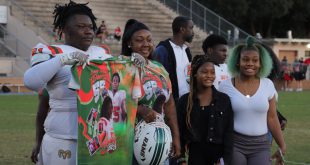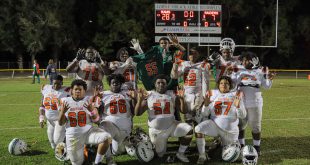By Trey Johnson | April 7, 2023
I must have done something special. I could not ask for a better way to end my college journey. However, this almost didn’t happen. About a year ago, Herbert Lowe, one of my professors at the University of Florida College of Journalism and Communications, approached me about doing my senior capstone project through his new advanced multimedia reporting course.
I hesitated. I had no intentions of applying myself to a course that would probably take me out (it almost did). I also considered the fact that Lowe had been hard on me since he met me. I was looking for a light senior schedule – a way to coast out of college.
However, Lowe had pushed me to do things I was reluctant to do in the past that turned out to be beneficial. For example, he was among those who had insisted that I drive down to Fort Myers to cover Santa Fe High School’s girls’ volleyball team as they won the state championship for WUFT News during fall 2021. That was my biggest accomplishment to date.
So, I reluctantly agreed to take Lowe’s class. He told me – and the seven other students in it – to come in with some ideas for possible stories to cover. My mother told me the same thing. I had nothing when that first class started. I had essentially taken the summer off. I took a course called visual journalism, and that’s when I decided to make a video for my capstone project.
Lowe directed us to submit story pitches within the first three weeks of the course. I submitted one on sports videographers, another on the top basketball players in the area and one on the Eastside High School football program. Only the Eastside one seemed to intrigue him.
Eastside High is within the historically Black neighborhoods of east Gainesville, those often considered overlooked in terms of resources from the city. While the school is a part of the International Baccalaureate advanced placement program, about half of its students come from economically disadvantaged households, according to U.S. News & World Report.
About the author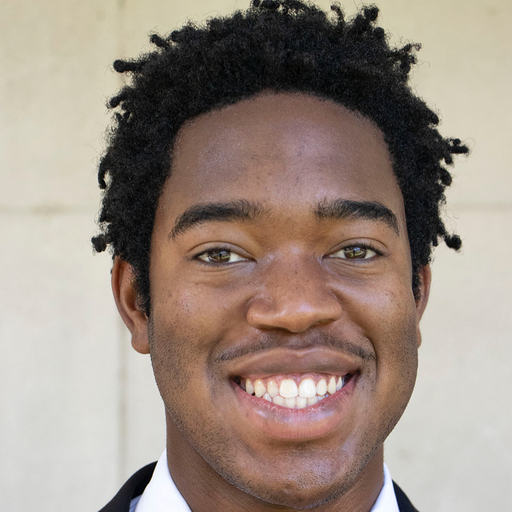 Trey Johnson, of Valrico, Florida, is a senior journalism and sports media major at the University of Florida College of Journalism and Communications. A graduate of Newsome High School in Lithia, Florida, Johnson has interned with the social media team for Florida Gators athletics and served as a reporter for WUFT News and WRUF (ESPN Gainesville). Additionally, he is a director for WUFT’s nightly newscast “First at Five.” Johnson aspires to continue making documentaries and someday run his own high school sports network. He has a media company called “Quiet Kid Media” and a podcast called “Tuned In with Trey.” His motto is “Stay Quiet and Stay Tuned.”
Trey Johnson, of Valrico, Florida, is a senior journalism and sports media major at the University of Florida College of Journalism and Communications. A graduate of Newsome High School in Lithia, Florida, Johnson has interned with the social media team for Florida Gators athletics and served as a reporter for WUFT News and WRUF (ESPN Gainesville). Additionally, he is a director for WUFT’s nightly newscast “First at Five.” Johnson aspires to continue making documentaries and someday run his own high school sports network. He has a media company called “Quiet Kid Media” and a podcast called “Tuned In with Trey.” His motto is “Stay Quiet and Stay Tuned.”
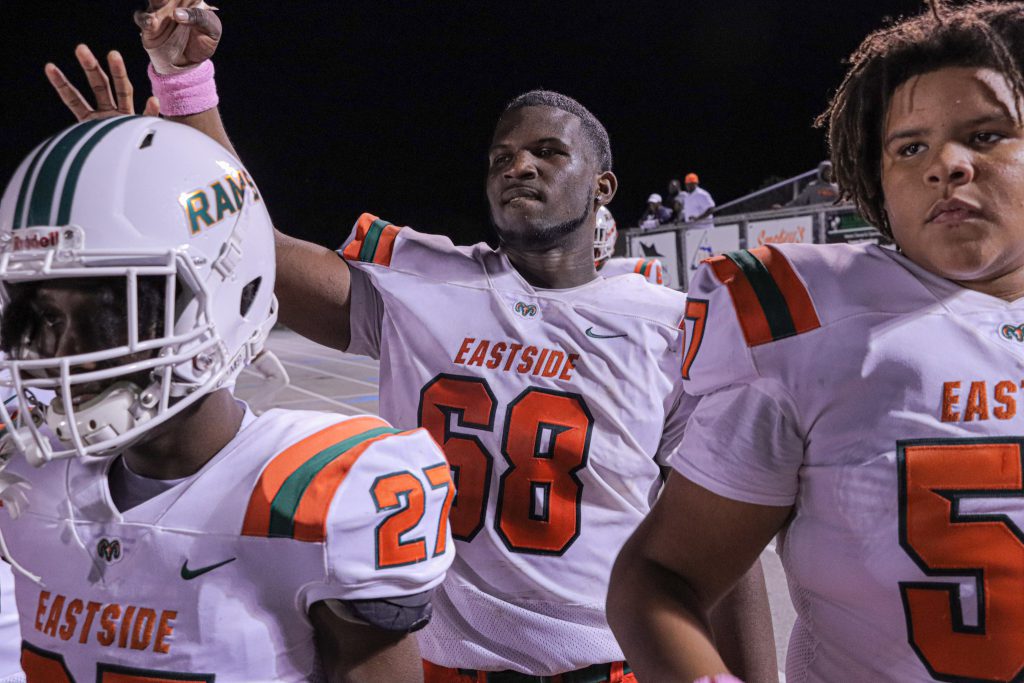
Some among its student athletes see high school sports as an escape from their circumstances, however, it is hard to attract college scholarships playing on a losing team. Conversely, winning not only boosts the morale of a school athletics program, but also a community at large.
Lowe wasn’t sold on my resurgent season idea right away. Eastside was just 2-0 at the time. Then we learned about the death of Dabien “DaeDae” White, a 17-year-old senior and starting offensive tackle. That sad news more than made my project newsworthy.
I didn’t want to cover White’s death in depth (and I didn’t). To me, the story was about an alum coming back to turn the program around. White’s death was a part of the story but not the story. Lowe, members of the college’s advisory council and I discussed this, but I didn’t buckle.
Covering death has always been an issue for me, even when I covered the deaths of two coaches at Oak Hall as an assignment for a prior class with Lowe the year before. I didn’t see death as the focus then. And yet that story was the precursor for what I did with Eastside.
It was not the only time Lowe and I disagreed with one another – but this time it seemed that we more than disagreed. I was done with Lowe and he was done with me. I told him I was through doing something merely because someone else wanted me to. I told him that there was just some things I was going to have to navigate on my own.
What brought this on was White’s death and funeral. When I first called Eastside’s athletic director about covering the team for the season, he declined my request, saying the program was on a media blackout out of respect for White’s family. I didn’t think much of it.
The athletic director said an Eastside win that Friday might lift the blackout. I was willing to wait it out. Yet, local media outlets and my peers in other classes were hopping on the story as well. I was ready to give the story away. They had found a way into the program that I missed.
Lowe and others wouldn’t let me quit. I attended the Bradford game that Friday night. It was my first time shooting football. I didn’t know what I was filming. The next day, I attended White’s funeral as a reluctant spectator. I didn’t want to be there at all. I thought I’d look like an outsider trying to mooch on the loss of others. I captured what I was comfortable with. I captured what didn’t make me stand out. At that time, only Coach Hoskins knew who I was.

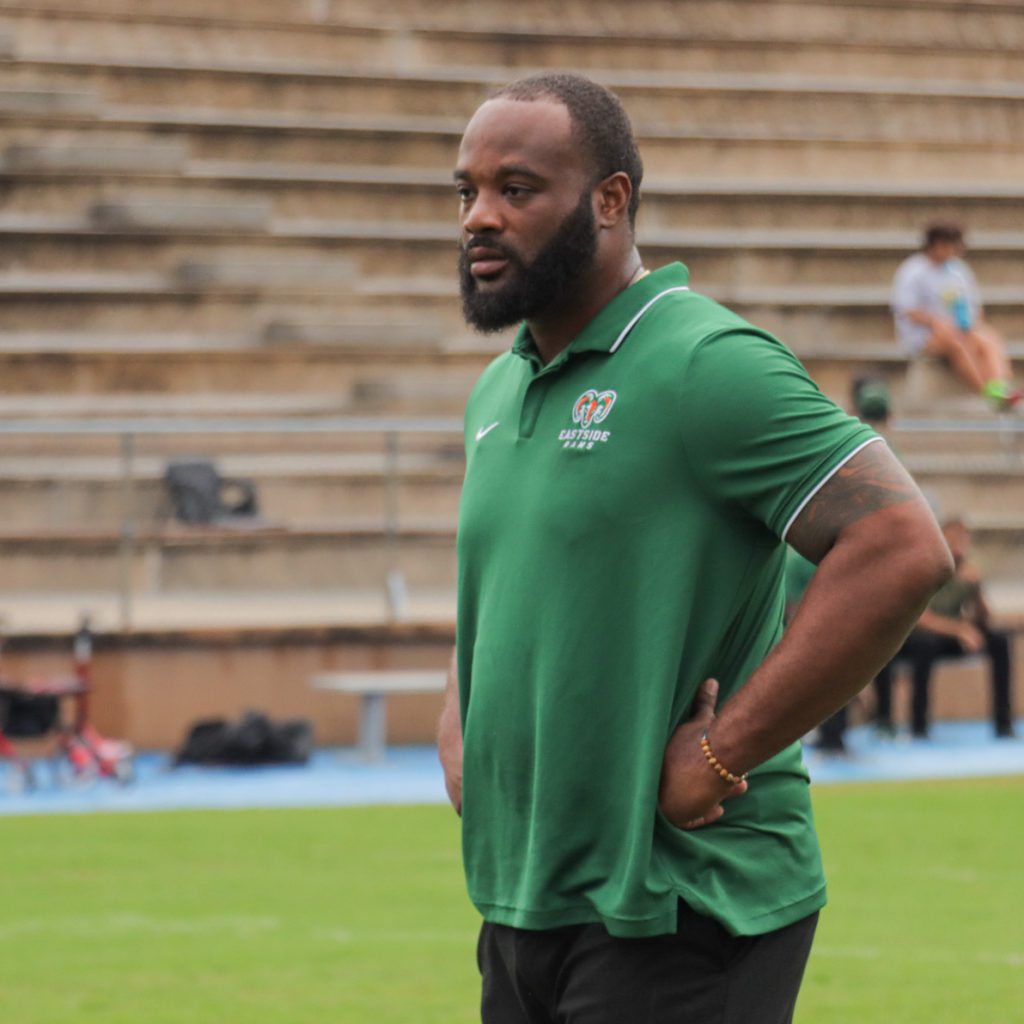
After that weekend, I was on my own for a bit. I went to practice every Wednesday after my shift at Publix. And I was at every game for the rest of the year. Midway through the season, with an important guest speaker coming to class, Lowe asked to see my progress. I had not edited anything I had shot by then. So I threw something together and called it “The Essence.”
My four-minute video received mixed reactions during the ensuing class presentation. My classmates thought it was creative and fun. Lowe said he could see I had talent, but he wanted to see elements I had yet to capture, for example, participant interviews and b-roll. Heather Van Blokland, an adjunct faculty member and a WUFT programming representative, agreed with him. Matt Abramson, the director of WUFT media services who was visiting our class that day, also said he saw the potential, but he clearly also wasn’t sold on the piece yet.
It’s hard to sell your thoughts when you’re still trying to figure them out. I could only do so much as one person with one camera. I continued to shoot practices and games. Slowly, I started to capture interviews as the regular season came to an end. Sadly, I waited until the last minute to get those. In the weeks prior, I was unsure of what to ask those who were part of the Eastside program. Most of my interviews were captured once Eastside had made the playoffs.
Throughout this project, I strived to capture everything in the moment. But I didn’t have some interviews going into the first playoff game against North Marion. I had a feeling Eastside would win, and I’m glad they did. That’s because my interviews for the project ultimately would not have been the same if done after the regular season had ended.
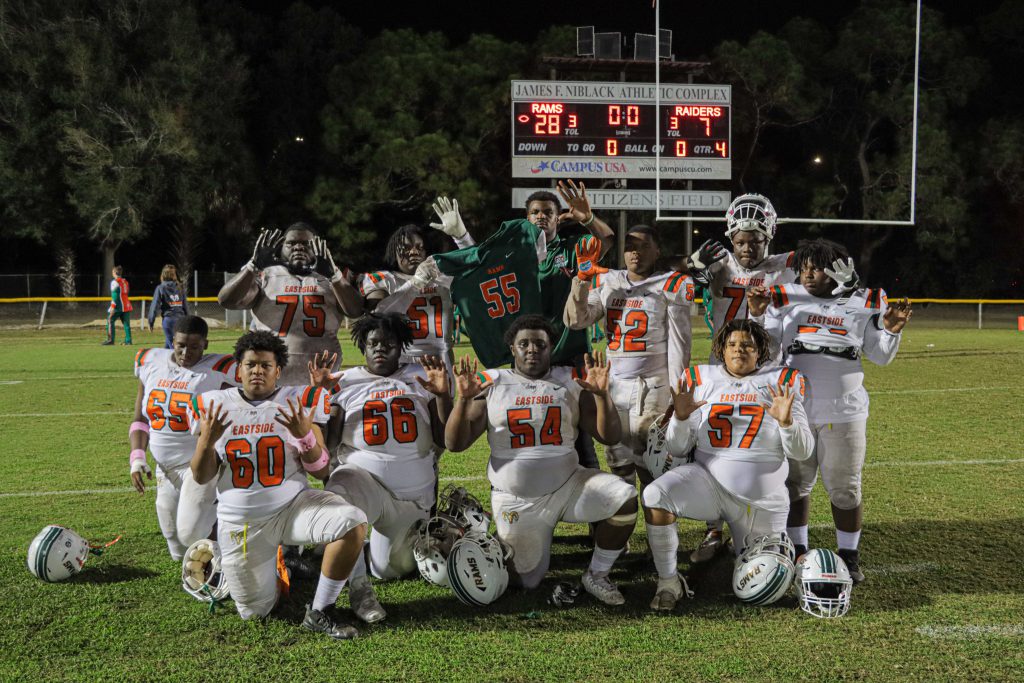
The week before the second-round game against Bradford brought about another hiccup. The whole time I had been working on the project – since Week 3 of the season – I was “on line,” which is to say pledging Iota Phi Theta Fraternity, a Black Greek-letter campus organization. My probate group’s coming out party was to be held the same night as the game in Starke.
I was in a tough spot. My frat brothers asked if there was any way I could get someone else to film the game. I knew I could not miss the game. I mentioned this to Lowe, and he confirmed what my heart and mind was telling me. (I learned that Lowe was a member of another Black fraternity in that conversation, and maybe a little something started to click between us.)
So I went to the Bradford game. Nobody else would know the story and what needed to be captured like I did. Turns out I even interviewed Hoskins right before the team got on the bus.
The playoffs were exhilarating. I wanted the season to continue as long as possible. I had invested so much time into the project. I enjoyed just hanging out with the team and becoming a part of their community. I knew that a loss would not just end the Rams’ season, but my time with them. And that’s just what happened when Eastside lost its matchup against Bradford.
That night, after the game, my phone was blowing up. My frat brothers had arranged for me and my fellow probates to “pop out” at a club in Gainesville. I was 45 minutes away, so I raced home, changed into more suitable attire and prepared to help my new brothers – they call me “Visionary” – put on a show at the club. I didn’t get to pop out the way I wanted. But it was a good lesson for me: Stay patient. My time to shine was coming.
There was precious little time to get my project ready before the semester was to end. Labeling and editing all my footage took hours and hours. The original edit was supposed to be six episodes, roughly five minutes each. I pumped out seven episodes totaling 42 minutes in about four days, just before the grading deadline. I was exhilarated but exhausted.
Lowe offered me a choice: Continue working on the project during the spring semester toward a possible short documentary airing on WUFT-TV, or just have the episodes published as was on the news organization’s website and be done with it. Obviously, I chose the former.
That meant cutting 12 more minutes from my original edit. That would be the hardest part of this whole journey. For the next three months, I learned from Abramson how to make key decisions and, most importantly, what to cut and how to tell the story I wanted to tell. From audio levels to color grading to making a promo, I absorbed it all.
Finally, I cut the piece to under 30 minutes, and soon it was scheduled for broadcast. All of my work would be done, right? Wrong. Bring on the promotional tour: Steve Russell’s “Sportscene” on WRUF and then WUFT’s daily podcast “The Point” and “First at Five” nightly newscast.
“It’s more than just a documentary,” Lowe said in an early planning meeting. And yet I was reluctant to go on the newscast. I prefer being behind the camera. But I must have done something special if they want me on TV, right? I didn’t know I could create this much value. That along the way, I would interview so many coaches and players who were seen as team leaders, and also review related news coverage of other local outlets as well as MaxPreps for historical data. And that while acting as the proverbial fly on the way, I would use my camera to capture as much as possible everything that happened at practices, games and in locker rooms.
I must thank God for blessing me through this journey. Now that it’s over, I realized three things:
Embrace the Journey: I wanted a probate so bad. All I wanted to hear was, “OK, number two, we see you deuce.” Like pledging a fraternity, and also filmmaking, it’s the process that builds you into the person you will become. I went through a lot to get to where I am today. I wouldn’t trade this experience for anything.
This is my moment: “Pop out number two. It’s your time to shine.” I got to this point with “Slept On Eastside” because I put the emphasis on other people. When I was doing it for myself, I couldn’t reach the people who needed their story told.
Keep going: After this project, everyone wants to know what’s next. I have no idea. Keeping in mind, though, these words from Coach Hoskins – “Put your head down and go back to work.”
 Special Report from WUFT News
Special Report from WUFT News
